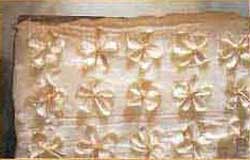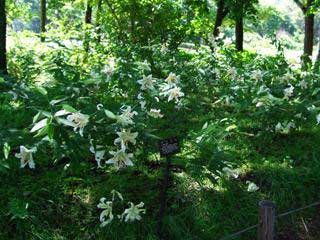Artisan Essential Oils
All Artisan Essential Oils™ are obtained directly from trusted eco-friendly growers and distillers.
Each of the Artisan Essential Oils™ was personally selected by Dr. Joie Power and is of the very best quality. These Artisan Essential Oils™ are not mass produced - they are produced one drop at a time by folks who care about what they're doing and strive to offer the very best in essentail oils. These exquisite oils offer excellent value considering the individual attention given to producing each one by people who care about their rare and unique nature. When you inhale the aroma of any of our exceptional Artisan Essential Oils™, you will immediately recognize it as being one of the finest oils anywhere.
The School no longer sells products but, for all of your Essential Oil and Aromatherapy needs, we recommend purchasing from: Artisan Aromatics.
Artisan Aromatics can provide you with everything we offered plus much, much more! - Artisan Aromatics Online Shop
|
1 ml = 20-25 dp
5 ml = 1/6 oz
10 ml = 1/3 oz
15 ml = 1/2 oz
30 ml = 1 oz
|
Lily Essential Oil
Botanical Name: Lilium auratum
Origin: South America
Cultivation: Organic
Method of Extraction: Enfleurage
Source: Flower Petals
Note:
Aroma: Floral, Sweet, Gentle
Main Chemical Components:
Blends Well With: cinnamon leaf, citrus oils, clove bud, jasmine, neroli, rose otto, tuberose, ylang ylang
Properties: Perfume, Aromatic
Note: All Essential Oils and Aromatherapy Products
are now sold by our friends at Artisan Aromatics
|
|
 Description and Uses: Our organic Lily Essential Oil is pure undiluted Lily Oil extracted by Enfleurage. Most Lily Oil is extracted by chemical solvents and is therefore called an "absolute" (Lily Absolute). Our Lily Oil is NOT an absolute, it is and essential oil and is most rare, coming from a small grower/extractor in South America. The entire process of extracting the Lily oil it done by hand using no heat and no chemical solvents. Pure local palm oil is used to absorb the aromatic oils from the Lily flower petals and once the palm oil is completely saturated with the essence of the Lily flower then the palm oil is separated from the Lily oil by cane sugar alcohol which is then evaporated to leave only the Lily oil. The process for producing the Lily Essential Oil by Enfleurage is quite labor intensive and requires many pounds of Lily flower petals per ml of oil but the results are astounding. If you close your eyes and inhale the aroma of the oil, you'll find that the aromatic essence is quite similar to that of the actual Lily flower. For a more complete description of the enfleurage extraction process, go to our web page: Enfleurage
Description and Uses: Our organic Lily Essential Oil is pure undiluted Lily Oil extracted by Enfleurage. Most Lily Oil is extracted by chemical solvents and is therefore called an "absolute" (Lily Absolute). Our Lily Oil is NOT an absolute, it is and essential oil and is most rare, coming from a small grower/extractor in South America. The entire process of extracting the Lily oil it done by hand using no heat and no chemical solvents. Pure local palm oil is used to absorb the aromatic oils from the Lily flower petals and once the palm oil is completely saturated with the essence of the Lily flower then the palm oil is separated from the Lily oil by cane sugar alcohol which is then evaporated to leave only the Lily oil. The process for producing the Lily Essential Oil by Enfleurage is quite labor intensive and requires many pounds of Lily flower petals per ml of oil but the results are astounding. If you close your eyes and inhale the aroma of the oil, you'll find that the aromatic essence is quite similar to that of the actual Lily flower. For a more complete description of the enfleurage extraction process, go to our web page: Enfleurage
Note: More information on our organic Lily oil is Continued Below.
Order your Essential Oils from Artisan Aromatics: Online Shop
|
|
 More Info:
The oil extracted from lilies has healing and softening properties. Especially, when the lily essential oil is mixed with that of calendula, it works wonderfully for sensitive skin. Some benefit has been shown for the use of Lily Essential Oil and Calendula in the treatment of cuperosis or spider veins. Lily oil (with Calendula) can be used for massage, in a bath, after a bath, for dry cuticles and elbows, as a facial moisturizer, under-eye oil and hot-oil treatment.
More Info:
The oil extracted from lilies has healing and softening properties. Especially, when the lily essential oil is mixed with that of calendula, it works wonderfully for sensitive skin. Some benefit has been shown for the use of Lily Essential Oil and Calendula in the treatment of cuperosis or spider veins. Lily oil (with Calendula) can be used for massage, in a bath, after a bath, for dry cuticles and elbows, as a facial moisturizer, under-eye oil and hot-oil treatment.
Lilium auratum was first introduced to the Western world from Japan. Lily essential oil is one of the most precious oils in the world and known for its heavenly aroma and fragrance. During the extraction process, fresh, fully opened flowers are plucked from the Lily plant and carefully laid on trays covered with a layer of palm oil. The essential oils from the flower petals slowly migrate to the palm oil and the process is repeated until the palm oil is completely saturated with the oil of the Lily. Then the Lily oil is separated from the palm oil by alcohol which then evaporated leaving only the pure Lily oil, i.e., Lily Essential Oil.
Lily oil cannot be distilled like most essential oils due to the delicate nature of the flowers. Enfleurage was the traditional method of extraction used into the early 20th century but solvent extraction using hexane has virtually replaced enfleurage, except, of course, for our own Lily Essential Oil. Solvent extracted Lily, called an "absolute", is used extensively by the perfume industry but, again, not by us (no chemicals are used to extract the that we sell). Either method (enfleurage or solvent extraction) is time consuming and oil yields are quite small for the amount of materials used. Now, the most commonly found Lily used by the perfume industry is entirely synthetic and has no healing properties whatsoever. Lily perfume is often enjoyed as a single-flower oil since the rich, warm, heady floral and yet subtle aroma produced from the flowers is quite wonderful in and of itself.
 The Lilium auratum is one of the true lilies. It is native to Japan and is sometimes called the golden rayed lily of Japan or the goldband lily. The flower colour is typically white with gold radial markings and orange spots, but variations in flower colour and markings are known. The strongly scented flowers are the largest of any lily species and the largest plants, which can reach 2.5 metres (8 ft), can carry up to twenty of these. It has been used widely in breeding and many of the more spectacular modern cultivars are derived in part from this species.
The Lilium auratum is one of the true lilies. It is native to Japan and is sometimes called the golden rayed lily of Japan or the goldband lily. The flower colour is typically white with gold radial markings and orange spots, but variations in flower colour and markings are known. The strongly scented flowers are the largest of any lily species and the largest plants, which can reach 2.5 metres (8 ft), can carry up to twenty of these. It has been used widely in breeding and many of the more spectacular modern cultivars are derived in part from this species.
Cultivation: This lily does well in plain or acidic soil; rich or fertilised soil will kill the plant. Bulbs should be planted in a hole three times their size in both depth and width in a well drained area. The best position for this plant is one where its top will receive sunlight while its base remains shaded. This lily can be cultivated by seed, but for faster reproduction scaling is recommended. Its life span (around 3 or 4 years) is significantly less than that of its descendants, so reproducing this plant is important for gardeners.
 Parts of the above "More Info" was derived from an online article on wikipedia.
Parts of the above "More Info" was derived from an online article on wikipedia.
Safety Considerations:
- Do not take essential oils internally.
- Do not apply to eyes, sensitive areas or mucous membranes.
- Do not apply undiluted to skin (for directions on proper dilution refer to an aromatherapy text).
- The information on this website is not intended to diagnose or prescribe.
- Pregnant women, nursing mothers and children should not use essential oils without first consulting an appropriately trained healthcare practitioner.
- The statements on this website have not been evaluated by the FDA.
Go to top of Page
Home |
Contact us |
Next Workshop |
About |
Consult Services |
FAQ |
Policies |
Links |
Prerequisites |
Workshop Schedule |
Checkout |
Essential Oils and Aromatherapy Products |
Aromatherapy Articles |
Aromatherapy Newsletters |
Enfleurage |
Artisan Essential Oils |
CEs |
Site Map by xml-sitemaps.com |
Recommended Essential Oils |
Online Aromatherapy Courses

|

|
